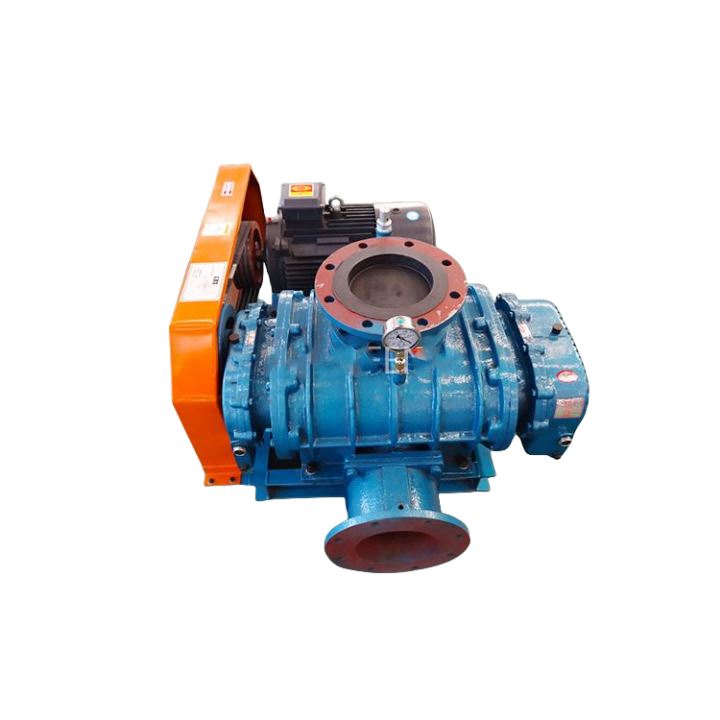- English
- 简体中文
- Esperanto
- Afrikaans
- Català
- שפה עברית
- Cymraeg
- Galego
- 繁体中文
- Latviešu
- icelandic
- ייִדיש
- беларускі
- Hrvatski
- Kreyòl ayisyen
- Shqiptar
- Malti
- lugha ya Kiswahili
- አማርኛ
- Bosanski
- Frysk
- ភាសាខ្មែរ
- ქართული
- ગુજરાતી
- Hausa
- Кыргыз тили
- ಕನ್ನಡ
- Corsa
- Kurdî
- മലയാളം
- Maori
- Монгол хэл
- Hmong
- IsiXhosa
- Zulu
- Punjabi
- پښتو
- Chichewa
- Samoa
- Sesotho
- සිංහල
- Gàidhlig
- Cebuano
- Somali
- Тоҷикӣ
- O'zbek
- Hawaiian
- سنڌي
- Shinra
- Հայերեն
- Igbo
- Sundanese
- Lëtzebuergesch
- Malagasy
- Yoruba
- Español
- Português
- русский
- Français
- 日本語
- Deutsch
- tiếng Việt
- Italiano
- Nederlands
- ภาษาไทย
- Polski
- 한국어
- Svenska
- magyar
- Malay
- বাংলা ভাষার
- Dansk
- Suomi
- हिन्दी
- Pilipino
- Türkçe
- Gaeilge
- العربية
- Indonesia
- Norsk
- تمل
- český
- ελληνικά
- український
- Javanese
- فارسی
- தமிழ்
- తెలుగు
- नेपाली
- Burmese
- български
- ລາວ
- Latine
- Қазақша
- Euskal
- Azərbaycan
- Slovenský jazyk
- Македонски
- Lietuvos
- Eesti Keel
- Română
- Slovenski
- मराठी
- Srpski језик
What Makes Roots Vacuum Pumps the Key to Efficient Industrial Vacuum Systems?
2025-11-13
A Roots Vacuum Pump, also known as a Roots blower pump or mechanical booster pump, is a positive displacement vacuum pump designed to deliver high pumping speed at low inlet pressures. It plays a crucial role in various industries that require rapid evacuation of air or gas, including chemical processing, pharmaceuticals, food packaging, semiconductors, and vacuum coating.
Unlike traditional vacuum pumps, the Roots Vacuum Pump operates on the principle of synchronized rotors rotating in opposite directions. These rotors trap a certain volume of gas and transfer it from the inlet to the exhaust side without internal compression. When used in combination with a backing pump, such as a rotary vane pump or screw pump, it greatly enhances the overall pumping capacity and vacuum level.
The key characteristics of the Roots Vacuum Pump include:
-
Non-contact operation: No metal-to-metal contact between rotors ensures long lifespan and minimal wear.
-
High pumping efficiency: Rapid gas transfer for faster evacuation.
-
Oil-free design: Clean vacuum environment suitable for contamination-sensitive processes.
-
Stable performance: Constant volume delivery independent of pressure variation.
-
Low maintenance: Simplified mechanical structure reduces service intervals.
Technical Parameters of Roots Vacuum Pump
| Parameter | Description |
|---|---|
| Pumping Speed | 150 – 30,000 m³/h |
| Ultimate Pressure | Up to 1×10⁻³ mbar (when combined with backing pump) |
| Motor Power | 1.5 – 75 kW |
| Rotational Speed | 1500 – 3000 rpm |
| Inlet/Outlet Diameter | DN80 – DN400 |
| Cooling Method | Air-cooled or water-cooled |
| Lubrication | Oil-lubricated gears, dry rotor chamber |
| Operating Temperature Range | -10°C to +40°C |
| Material of Construction | Cast iron, stainless steel, or aluminum alloy |
| Noise Level | ≤75 dB(A) |
This table reflects the versatility and adaptability of Roots Vacuum Pumps in meeting diverse industrial requirements. Whether the demand is for high throughput in semiconductor fabrication or vacuum drying in pharmaceuticals, this technology offers both reliability and scalability.
Why Are Roots Vacuum Pumps Crucial in Modern Industrial Applications?
The importance of Roots Vacuum Pumps lies in their ability to bridge the gap between mechanical and high-vacuum technologies. They serve as the “booster” stage in multi-pump systems, improving pumping performance and reducing operational time.
Key Advantages
-
Enhanced Pumping Speed
Roots pumps can increase the pumping speed of a system by several times when used with a backing pump. This results in shorter evacuation times and higher productivity in applications such as freeze drying, vacuum metallurgy, and coating deposition. -
Energy Efficiency
Their efficient mechanical design minimizes energy loss during gas compression. Combined with modern frequency converters, they deliver significant energy savings, making them cost-effective over long-term operation. -
Clean Operation
With no oil contamination in the pumping chamber, the Roots Vacuum Pump ensures a clean vacuum environment—critical for electronic, optical, and medical industries. -
Durability and Stability
The robust design allows continuous operation even under harsh industrial conditions. The absence of internal friction contributes to low noise, stable performance, and minimal vibration. -
Wide Application Range
Roots pumps are widely used in sectors such as:-
Vacuum packaging and food processing
-
Vacuum distillation and chemical synthesis
-
Vacuum coating and metallization
-
Pharmaceutical freeze-drying
-
Semiconductor and electronics production
-
Why Choose Roots Technology Over Alternatives?
Compared with rotary vane or diffusion pumps, the Roots Vacuum Pump delivers superior pumping speed at low pressure levels, reduces contamination risks, and requires less maintenance. Its compact design and adaptability make it ideal for integration into modern industrial systems that demand high reliability and low environmental impact.
How Are Roots Vacuum Pumps Shaping Future Industrial Trends?
With the continuous evolution of manufacturing technologies, Roots Vacuum Pumps are entering a phase of innovation and optimization. Future trends are focusing on energy efficiency, digital monitoring, and environmentally friendly design.
1. Integration with Smart Control Systems
New generations of Roots pumps are equipped with digital sensors that monitor operating pressure, temperature, and rotational speed in real time. These intelligent systems help detect early signs of wear, ensuring predictive maintenance and minimizing downtime.
2. Eco-friendly and Oil-free Operation
As industries move toward sustainable production, manufacturers are developing dry-running Roots pumps that eliminate the need for lubricating oil in the pumping chamber. This reduces waste, lowers emissions, and supports cleanroom standards.
3. High-Efficiency Motors and Variable Frequency Drives (VFDs)
Energy-efficient motors combined with VFDs allow flexible control of pump speed according to load conditions. This not only cuts energy consumption but also extends service life by reducing mechanical stress.
4. Compact Modular Designs
Space-efficient configurations and modular structures enable easier integration into existing vacuum systems. Such designs are increasingly adopted in medical, laboratory, and microelectronics fields where compact setups are essential.
5. Enhanced Corrosion Resistance
Advancements in material science, including the use of stainless steel and protective coatings, enhance resistance to chemical corrosion—crucial for processes involving aggressive gases or solvents.
6. Global Market Expansion
The global demand for Roots Vacuum Pumps continues to rise, driven by industrial automation, semiconductor growth, and the push for energy-efficient equipment. As new regulations emphasize environmental performance, Roots pumps are becoming indispensable for achieving clean and efficient vacuum operations.
These trends highlight how Roots technology is not static but continuously evolving to meet the requirements of high-tech and eco-conscious industries.
Common FAQs About Roots Vacuum Pumps
Q1: What is the difference between a Roots Vacuum Pump and a rotary vane pump?
A Roots Vacuum Pump is primarily a booster that enhances the pumping speed of a vacuum system when paired with a backing pump, such as a rotary vane pump. The Roots pump handles larger volumes of gas efficiently at lower pressure ranges, while the rotary vane pump handles higher pressures and provides the base vacuum. Together, they form a powerful and efficient two-stage system.
Q2: How to maintain a Roots Vacuum Pump for long-term performance?
Regular maintenance includes checking gear oil levels, inspecting seals and bearings, cleaning cooling systems, and ensuring correct belt tension. Avoid operating the pump above its maximum differential pressure to prevent overheating or damage. Proper installation with vibration isolation and adequate cooling further ensures long service life and consistent vacuum performance.
Roots Vacuum Pumps stand as the cornerstone of high-performance vacuum technology, offering unmatched speed, stability, and reliability across industrial sectors. Their ability to deliver oil-free, high-capacity vacuum performance makes them indispensable for modern manufacturing, scientific research, and clean production environments.
As industries continue to evolve, the Roots Vacuum Pump remains an essential solution for achieving precision, efficiency, and environmental compliance. The brand Yinchi is dedicated to developing innovative Roots Vacuum Pump systems tailored for a wide range of applications, ensuring customers achieve optimal performance and long-term reliability.
For more information about product specifications, custom configurations, or technical support, Contact Us to discover how Yinchi can provide the ideal vacuum solution for your industrial needs.




